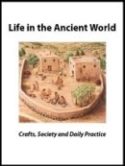
Finding Phoebe
What New Testament Women Were Really Like
By Susan E. Hylen
(Grand Rapids, MI: Eerdmans, 2023), x + 188 pp.,n 4 b/w photos; $21.99 (paperback)
Reviewed by T.J. Wray
I have spent much of my career researching, writing, and speaking about the lives of women during biblical antiquity. Here in this review, I focus on women living under the Roman occupation of Judea during the first and second centuries AD, the historical period covered in Susan E. Hylen’s book Finding Phoebe. Hylen explores the varied roles of women like Phoebe, a member of the early Christian community who lived near Corinth. While Paul refers to Phoebe as “sister,” “deacon,” and “benefactor” (Romans 16:1–2), Hylen admits that these designations may not carry the same meaning as they do today. Phoebe’s role, therefore, is open to interpretation and may range from “church leader” to perhaps someone who served Paul in a more informal capacity.
The various ways in which we interpret Paul’s references to Phoebe serve as the backbone of Hylen’s book, as she challenges readers not only to explore New Testament women in their historical context, but also to set aside assumptions about them and to imagine what their lives were like.
In our quest to explore the lives of New Testament women, we must first note that the Roman Empire was controlled by powerful men. This included the emperor, who enjoyed a divine status (cf. the Latin title Augustus, or “Venerable”), an all-male senate, various appointed local leaders, and a professional military. Roman citizenship was based largely on wealth and social status, thus making it an elite and exclusionary privilege. Roman citizens could vote, hold public office, own property, and enjoy many other perks that non-citizens might have envied. Unlike their male counterparts, women who held Roman citizenship could not vote or hold public office, but they did have many other rights, including the right to conduct business, own property, and divorce.
It is generally assumed that Jews in Judea also operated under a patriarchal system. Although it is true that men created laws, maintained order, and led religious life and Temple worship, the Jewish system was not as restrictive as we once imagined. For instance, there is ample evidence to support the notion that women maintained a literacy rate comparable to men. Hylen rightly asserts that many women occupied a variety of jobs beyond their expected roles as wife and mother. For example, some women worked as shopkeepers, teachers, and midwives, professions that required some level of education and record-keeping skills.

The New Testament cites many examples of Jewish women circumventing the status quo to assume roles comparable to men. Mary Magdalene, along with several other women, helped finance the Jesus movement (Luke 8:1–3); Herodias, the wife of Herod Antipas, manipulated events to arrange the execution of her nemesis, John the Baptist (Mark 6:17–28); Tabitha operated a charitable organization for the widows and orphans of Joppa (Acts 9:36–42); and Lydia was a wealthy, influential merchant and a leader in one of the movement’s many “house churches”—private homes that were used for early Christian worship (Acts 16:11–15, 40).
After Jesus’s death, women became central figures in the post-resurrection community. The Acts of the Apostles relates the communal life of Jesus’s followers in the immediate aftermath of his death as an egalitarian utopia, where everyone sold their possessions, and everything was distributed equally among men and women (Acts 2:42–47). Over time, small house churches began to emerge, and (mostly) wealthy women presided over them, as Christians met, broke bread, prayed, and remembered Jesus (1 Corinthians 1:11; Acts 12:12). These early church leaders likely included Phoebe but also Mary the mother of John Mark who led services in her home in Jerusalem (Acts 12:12–17), Nympha in Laodicea (Colossians 4:14), and Apphia in Colossae (Philemon 2). Women often worked alongside men as missionaries, notably Prisca and her husband, Aquila. The efforts of countless other women filled the seats in house churches from Judea to Asia Minor and Greece with new converts (Philippians 4:2–3; Romans 16:1–7).
Sadly, the era of the inclusive house churches was short lived, only to give way to larger, more ornate buildings, complete with a hierarchal system of all-male clergy. The fair and equal treatment of women that so characterized Jesus’s ministry gradually dissolved, as women were nudged to the sidelines. The egalitarian utopia described in Acts 2:42–47 was replaced with a form of exclusionary sexism, where women were no longer active missionaries and presiders, but instead were expected to sit down and be quiet (Ephesians 5:22–24; 1 Timothy 2:11–15).
In addition to the New Testament, new archaeological data and ancient documents attest that some ancient women owned property, participated in community life, and even assumed leadership roles and acted as patrons. Hylen’s book does a great job showing that the old model of women as passive figures, wholly subservient to men and necessarily limited only to the roles of wife and mother, must be discarded in favor of a much broader understanding of their complex, dynamic, and multifaceted lives.
T.J. Wray is Professor of Religious and Theological Studies at Salve Regina University. She focuses on biblical women, grief experience, and Bible education.
Read more in Bible History Daily:
All-Access members, read more in the BAS Library:
Woman, A Power Equal to Man
How Women Differed
Thecla: The Apostle Who Defied Women’s Destiny
Not a BAS Library or All-Access Member yet? Join today.
The post Review: What New Testament Women Were Really Like appeared first on Biblical Archaeology Society.


0 Commentaires